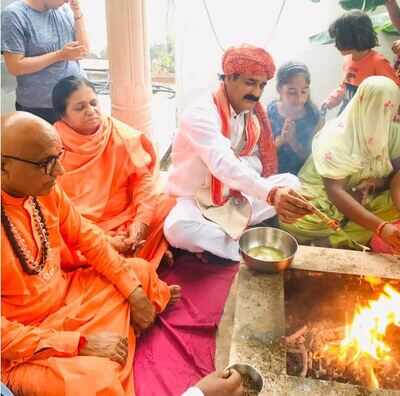
NOIDA: On the historic day, when the bhoomi pujan for Ram Mandir was being performed in Ayodhya on Wednesday, villagers from Ravan's birthplace - Bisrakh - too have sent soil for the foundation of temple.
Soil and water from as many as 1,000 religious and historical places and rivers has been sent to Ayodhya to be used in the foundation of the Ram Mandir which includes soil from Bisrakh too after the Shri Ram Janmabhoomi Teerth Kshetra trust asked religious places across India for the same.
Greater Noida’s Bisrakh, which has an over 100-year-old “Swayambhu Shivling”, is considered the birthplace of Ravan, where according to the Indian mythology, his father Vishrava, meditated and prayed to Lord Shiva after which Ravan was born at a place about 200 meters away.
The place, which does not have an idol of Ravan, has a Kadambh tree which is considered the birth place of Ravan in the premises of a temple.
Acharya Ashokanand Maharaj, who handles the Shri Mohan Vedic Evam Yog Ashram Trust, also known as the Bisrakh Dham, told TOI that they held a kirtan followed by a hawan and a bhandara on Wednesday.
“The hawan was held to pray for the construction of the Ram temple without any obstruction. The name of Lord Ram was invoked during prayers,” he said.
This was when Bisrakh village is famous for traditionally not having a single Ram temple.
The only idol of Lord Ram, Lakshman and Sita, also called the Ram-pariwar, was installed in the Bisrakh Dham temple in August 2016 when a controversy broke out in the village after the temple authorities tried to install an idol of Ravan near the Kadambh tree.
Three mahants from Ghaziabad and Delhi were booked for vandalism after Ravan’s idol was found desecrated two days before the proposed ceremony but the matter soon reached a resolution and since then, no effigy could ever be installed.
“It was for worship but more so, because Ravan is our ancestor and the idol was only a mark of respect and remembrance. While the idol of Ram-pariwar was installed here, Ravan’s could not be. We are now making a new idol of Ravan which is inspired by an ancient statue currently present in London museum,” he said.
The acharya said the statue will be installed as soon as it is ready. Apart from this, he said that they are planning to construct a Ram temple in Bisrakh too.
However, the villagers of the area, who do not celebrate Dussehra and consider it as a day of mourning, remember that traditionally, there has been no Ram temple in the village and organising Ramleela is also considered ominous here.
“There is no Ram temple in Bisrakh. Around 50 years back, Ramleela was staged but those who played the characters of Ram and Hanuman died during the act,” said Rekha, a villager.
“While the one who played Ram died after an arrow that was shot at him during the act hit him in the heart, the one who played Hanuman died after he fell down during the act,” the acharya remembers his parents telling him.
Soil and water from as many as 1,000 religious and historical places and rivers has been sent to Ayodhya to be used in the foundation of the Ram Mandir which includes soil from Bisrakh too after the Shri Ram Janmabhoomi Teerth Kshetra trust asked religious places across India for the same.
Greater Noida’s Bisrakh, which has an over 100-year-old “Swayambhu Shivling”, is considered the birthplace of Ravan, where according to the Indian mythology, his father Vishrava, meditated and prayed to Lord Shiva after which Ravan was born at a place about 200 meters away.
The place, which does not have an idol of Ravan, has a Kadambh tree which is considered the birth place of Ravan in the premises of a temple.
Acharya Ashokanand Maharaj, who handles the Shri Mohan Vedic Evam Yog Ashram Trust, also known as the Bisrakh Dham, told TOI that they held a kirtan followed by a hawan and a bhandara on Wednesday.
“The hawan was held to pray for the construction of the Ram temple without any obstruction. The name of Lord Ram was invoked during prayers,” he said.
This was when Bisrakh village is famous for traditionally not having a single Ram temple.
The only idol of Lord Ram, Lakshman and Sita, also called the Ram-pariwar, was installed in the Bisrakh Dham temple in August 2016 when a controversy broke out in the village after the temple authorities tried to install an idol of Ravan near the Kadambh tree.
Three mahants from Ghaziabad and Delhi were booked for vandalism after Ravan’s idol was found desecrated two days before the proposed ceremony but the matter soon reached a resolution and since then, no effigy could ever be installed.
“It was for worship but more so, because Ravan is our ancestor and the idol was only a mark of respect and remembrance. While the idol of Ram-pariwar was installed here, Ravan’s could not be. We are now making a new idol of Ravan which is inspired by an ancient statue currently present in London museum,” he said.
The acharya said the statue will be installed as soon as it is ready. Apart from this, he said that they are planning to construct a Ram temple in Bisrakh too.
However, the villagers of the area, who do not celebrate Dussehra and consider it as a day of mourning, remember that traditionally, there has been no Ram temple in the village and organising Ramleela is also considered ominous here.
“There is no Ram temple in Bisrakh. Around 50 years back, Ramleela was staged but those who played the characters of Ram and Hanuman died during the act,” said Rekha, a villager.
“While the one who played Ram died after an arrow that was shot at him during the act hit him in the heart, the one who played Hanuman died after he fell down during the act,” the acharya remembers his parents telling him.

Coronavirus outbreak
Trending Topics
LATEST VIDEOS
City
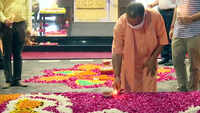 Watch: CM Yogi lights earthen lamps at residence as part of 'deepotsav'
Watch: CM Yogi lights earthen lamps at residence as part of 'deepotsav' 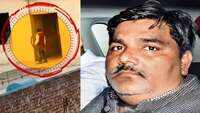 'Wanted to teach Hindus a lesson' using political power, ex-AAP councillor Tahir Hussain confesses
'Wanted to teach Hindus a lesson' using political power, ex-AAP councillor Tahir Hussain confesses 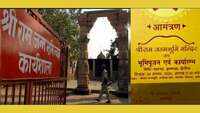 48-hour countdown to Ram Mandir Bhumi Pujan in Ayodhya; invitation cards sent
48-hour countdown to Ram Mandir Bhumi Pujan in Ayodhya; invitation cards sent 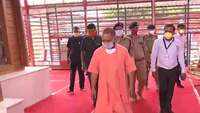 UP CM Yogi Adityanath takes stock of preparations in Ayodhya ahead of Ram Temple bhumi pujan ceremony
UP CM Yogi Adityanath takes stock of preparations in Ayodhya ahead of Ram Temple bhumi pujan ceremony
More from TOI
Navbharat Times
Featured Today in Travel
Quick Links
Kerala Coronavirus Helpline NumberHaryana Coronavirus Helpline NumberUP Coronavirus Helpline NumberBareilly NewsBhopal NewsCoronavirus in DelhiCoronavirus in HyderabadCoronavirus in IndiaCoronavirus symptomsCoronavirusRajasthan Coronavirus Helpline NumberAditya ThackerayShiv SenaFire in MumbaiAP Coronavirus Helpline NumberArvind KejriwalJammu Kashmir Coronavirus Helpline NumberSrinagar encounter
Get the app



